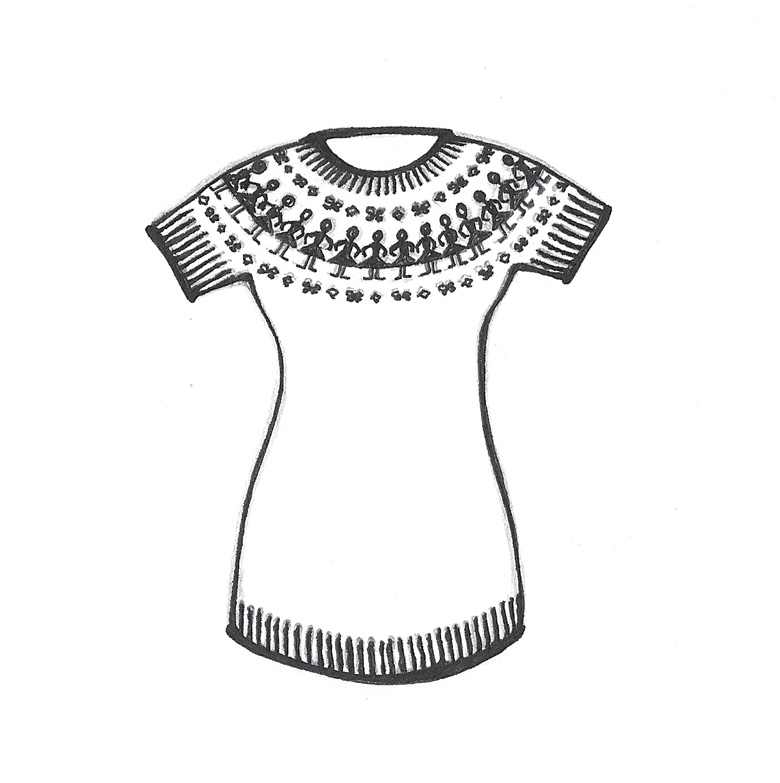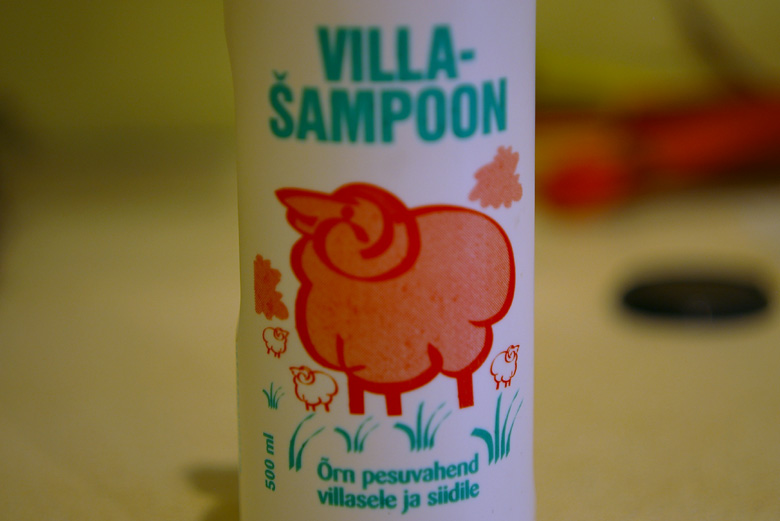Yesterday we featured a film from the 1950s produced by the Whirlpool Corporation which really pushed the idea that wool is impossible to care for. However with the right information, caring for WOOL need not be a horrible chore and is the best way to extend its lifespan. In today’s WOVEMBER WORDS we share an excerpt from a post written by TEAM WOVEMBER MEMBER Kate Davies. These care-notes were originally written in relation to Kate’s popular Paperdolls pattern and are particularly useful for getting a nice even finish on a stranded colourwork YOKE such as the one featured in that design.
In extremely exciting news and as many of you probably already know Kate is currently publishing an outstanding collection of new yoke sweater patterns. In light of this wonderment we thought that WOVEMBERISTS might enjoy a refresher course on achieving a lovely smooth finish on a stranded colourwork yoke. However even if you are not an avid knitter of stranded colourwork yokes, the notes on fibre-choice and approaches to blocking are relevant wool-care pointers for blocking every hand-knitting project.
Paperdolls – an early YOKE design by Kate Davies!
1) Use a pure wool yarn (such as a shetland or the bowmont braf I used for the original paperdolls)
2) Do not weave in the floats along the back of the work. You will end up with long floats, but (particularly if you are using a pure wool yarn), these will even up and sort themselves out after a few wears.
3) When you are working a stretch of more than 8 stitches, fan the stitches out a little on the right hand needle before working the next stitch in the contrasting colour. This slows down the pace and flow of the knitting, but is particularly useful if your tension tends to be tight. (Don’t overdo it though! You don’t want the knitting to turn baggy!)
4) Block like a loon. Soak the sweater in cool water and wool wash for at least 20 minutes to allow it to relax and bloom, rinse carefully, then remove excess water by rolling and squashing between a couple of dry towels. Now turn the sweater inside out and stretch to shape, smoothing out the long floats. Spend five or ten minutes stretching and smoothing the back of the work (the floats should lie nice and flat) then turn the sweater the right way round. Stretch the fabric out to shape again, but do not rub or smooth the front of the work (to avoid any risk of felting). Again, spend a while over this, paying particular attention to any areas of fabric that look like they might want to pucker up. Pin the sweater out to the correct dimensions and allow to dry flat. About half way through the drying process, turn the sweater over and pin it out again (don’t stretch it again or change its shape when you are doing this: simply turn it over and pin it out). This enables both sides of the sweater to get the benefit of lying flat against the blocking surface. Now leave to dry completely.
– Kate Davies, taken from this post at katedaviesdesigns.com, written 2010
An Estonian Wool Wash, identified as such by the helpful woolly sheep illustrated on the front. My Estonian comrades tell me this one is a bit harsh but I found it very effective for getting all the grease out of raw fleece! Photo © Felicity Ford

